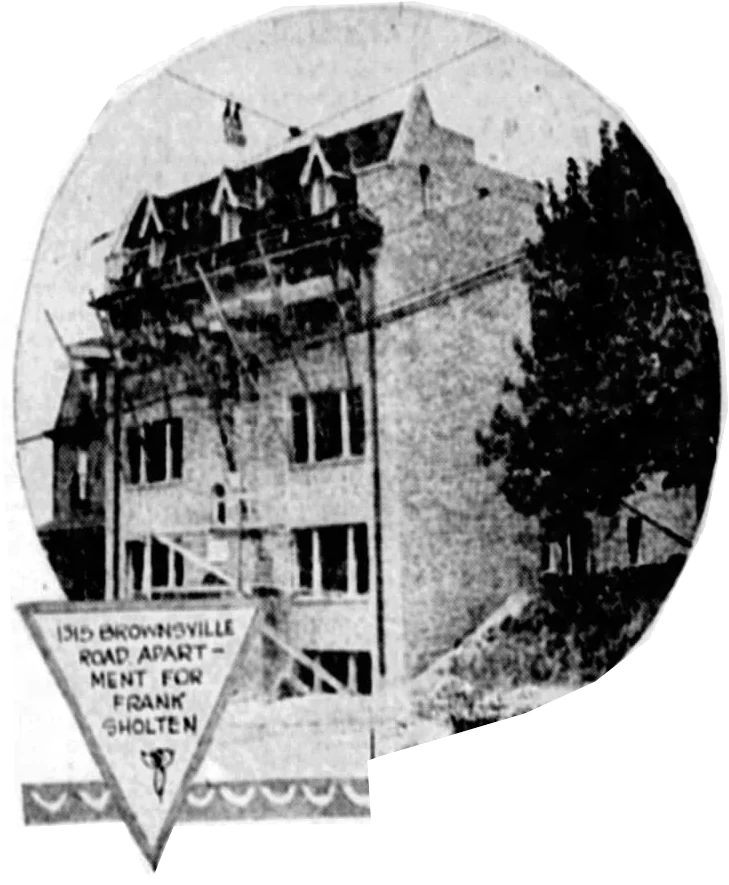
The giant Kaufmann’s department store grew in stages over decades. This part of it was designed by Charles Bickel, who decorated it with exceptionally fine terra-cotta ornaments.




Comments

The giant Kaufmann’s department store grew in stages over decades. This part of it was designed by Charles Bickel, who decorated it with exceptionally fine terra-cotta ornaments.





H. Childs Hodgens was the architect of this church, which was built in 1911.1 It has not been M. P. for a good while; currently it is shared by the House of Prayer for All Slavic Christian Church and the Congregation Yeshua Ben David.






Father Pitt has not been able to find the architect of this fairy-tale palace, but it is in good shape. It was built for Frank Sholten, a local newsdealer who apparently wanted to expand into the landlording business, in 1928, and a Sun-Telly photographer captured the building still under construction.

The building has a near-twin in West Homestead, and some lucky day Father Pitt or one of his correspondents will find the name of the artist behind both of them. Meanwhile, we can appreciate the details, bathed in golden late-afternoon sun.





Benno Janssen was one of the titans of Pittsburgh architecture, but even titans take on small projects once in a while. This is a fairly ordinary house on an ordinary street in Brookline, but it was designed by the firm of Janssen & Abbott.1 In spite of revisions that have changed some of the original character, it seems to retain some of the elegant simplicity of Janssen, who never wasted a line.

The front door is set back on the side of the house, which allows a broad front living room opening out on the porch, without dropping visitors right into the living room when they arrive—a clever way of making a narrow lot seem less restrictive.


Press C. Dowler was the architect of the school, and may have designed the urns as well.

Ornamental patterns, including a fine Vitruvian scroll (the wave pattern in the middle), over the Fifth Avenue entrance to the Frick Building.

A pair of houses probably built in the 1860s or 1870s, according to old maps, with an addition in the rear in the 1880s.

The Alla Famiglia restaurant was one of the pioneers in the ongoing revitalization of Allentown, and its owners have spiffed up this building beautifully. They have also expanded into the old movie theater next door.


First put up in 1913 (replacing a clock on a post that had stood here earlier), the Kaufmann’s clock is one of the famous sights of Pittsburgh. It keeps time, too.



Setaria faberi is an aggressively weedy but beautiful Asian grass found in vacant lots, on roadsides, and at the edges of parking lots everywhere.

